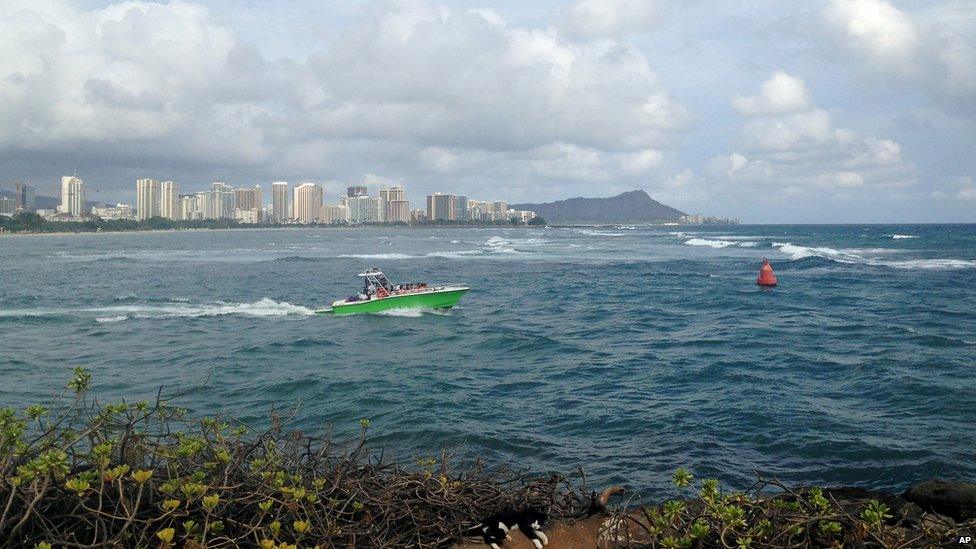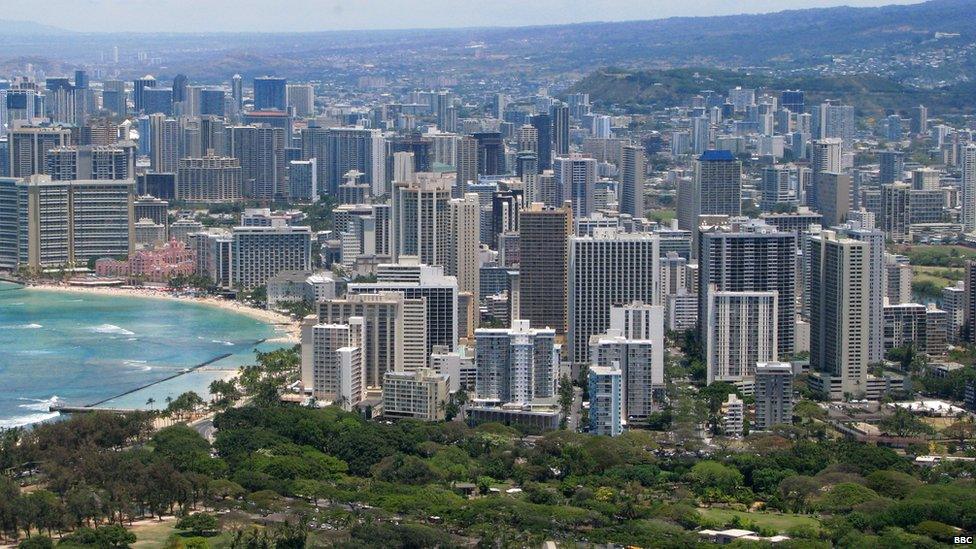Popular Hawaii beach shuts due to sewage spills
- Published

Waikiki Beach is the state's most popular tourist destination
Heavy rains triggering massive sewage spills have closed Hawaii's most popular beach and tourist destination.
Waikiki Beach closed on Monday after heavy rains caused by a tropical storm set off the spills.
Tropical Storm Kilo caused 500,00 gallons of wastewater to come gushing out of manholes, making the waterfront unsafe for beachgoers.
"Now's not the time to go swimming," said Lori Kahikina, Honolulu's director of environmental services.
The beachfront sees about 4.5m tourists annually.
It will be a few days before the ocean is safe for people to swim in again, Ms Kahikina said, and water is currently being tested.
The water entered the sewage system when tree leaves and other debris clogged the storm drains.
Some people were seen opening manhole covers in an attempt to let stormwater drain, which is illegal.

Officials have warned swimmers that they could get "extremely sick" from ocean water
City officials are advising people to stay away from a four mile (6km) stretch of waterfront extending from Waikiki to nearby Kakaako. Sewage was also emerging by Ala Moana Beach Park, a street near a shopping mall in Waikiki.
Waikiki's beaches have closed before for the same reason - in 2006, 48 million gallons of raw sewage poured into a canal near the area's hotels.
"We don't know right now what is in the water. You could get a serious infection, get extremely sick or worse," said Shayne Enright, a Waikiki city official.
Every beach on the island is under a "brown water advisory" issued by the Department of Health, noting that waters might be contaminated.
Hawaii is under numerous state-wide flash flood warnings and watches. Some roads are closed due to flooding on the highways. Two schools are closed, in addition to the Honolulu Zoo.
The island will experience more rain and high humidity throughout the rest of the week, meteorologists said, prompting more heavy rains, thought the storm is expected to move further away from Hawaii in the coming days.